I haven’t thought much about radon after we purchased our home…almost a decade ago. It had a mitigation system already, but we tested the radon level in the home, just to be safe. And all was well. So, I forgot about radon.
Since January is National Radon Action Month, I’m partnering with the local business, Thrasher, to let you know why radon testing is important, even for people like me, who think they already have radon under control.
Disclosure: This post is sponsored by Thrasher. All thoughts, opinions and typos are my own.
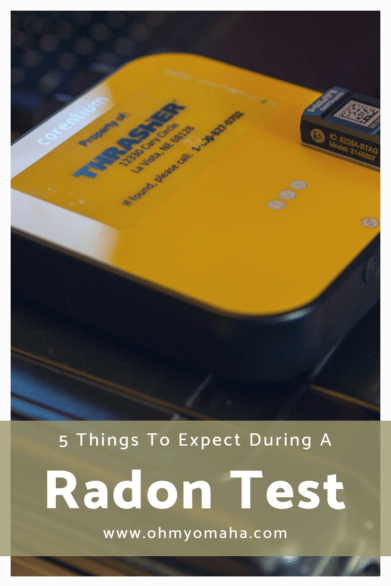
What is radon?
Radon is a naturally-occurring radioactive gas. It’s a byproduct of uranium decay, and all soils and rocks contain different concentrations of uranium.
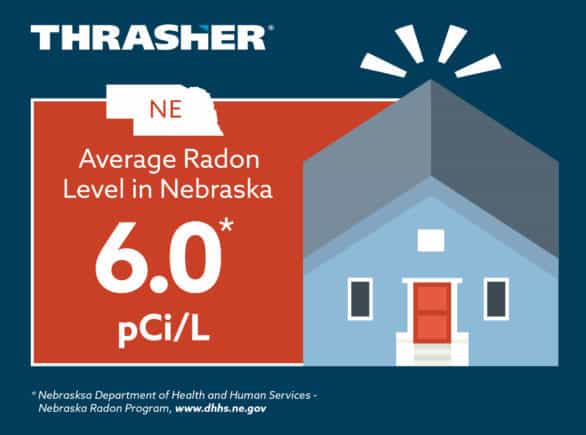
There’s a lot of it in Nebraska and Iowa. On average, the radon level in Nebraska is 6.0 pCi/L and 8.5 pCi/L in Iowa.
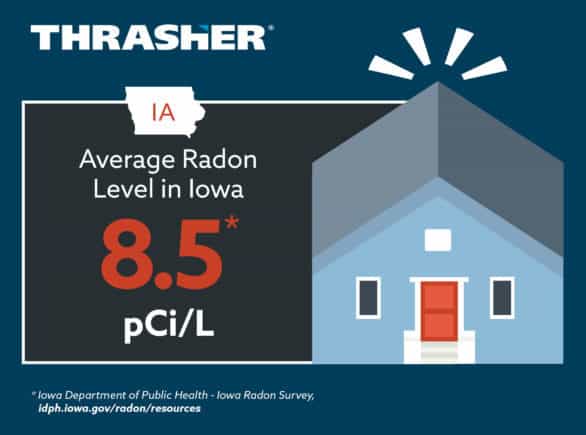
As uranium breaks down over time, it releases toxic byproducts that seep up and out of the soil and into the air. You can’t smell it and you can’t see it, but it’s linked to lung cancer.
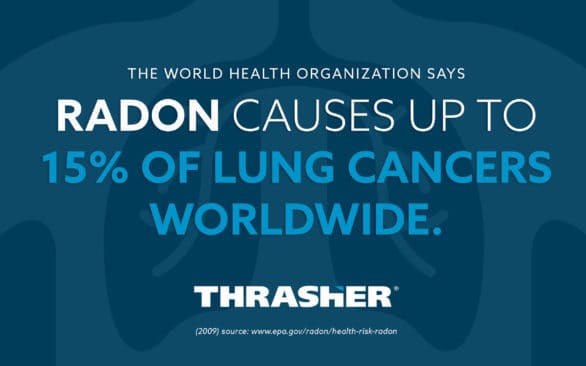
If high levels are detected in your home, you will need to have a Radon Mitigation System installed in your home.
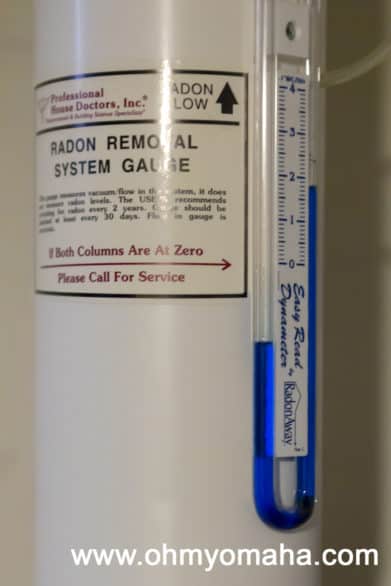
To learn more about radon, you should read this Radon Homeowner Guide.
What to expect during a home radon test
You can test radon levels in your house on your home with a store-bought kit or you can hire someone like Thrasher, who will send a specialist to test it and read the results for you. It’s cheaper to do the test yourself, but you’re on your own for interpreting the results.
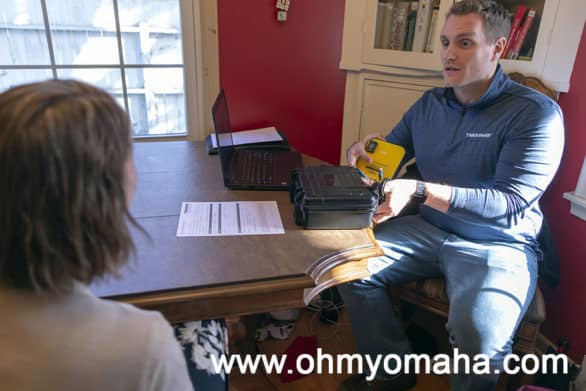
For my partnership with Thrasher, they sent Ben, a Radon Gas Measurement Specialist, to my home to measure the radon with a 48-hour test.
If you’re going with a specialist to measure things, I recommend going through a reputable company. Take Thrasher, for instance, who has been a fixture in the Omaha metro area for more than 40 years. Here’s the process with Thrasher:
- Set up the monitor drop-off – For radon testing, you’ll need to set up two appointments. The first one is a quick one where you’ll meet your Radon Gas Measurement Specialist and he or she will set up a device called a Continuous Radon Monitor, or CRM, in your home. The CRM measures radon hourly for 48 hours. Thrasher put me in direct contact with Ben, who coordinated a time to drop off the CRM and accommodated my schedule to get the kids dropped off at school first. The test needs to sit undisturbed for 48 hours.
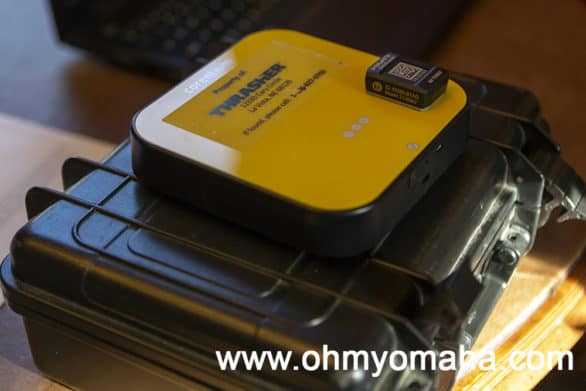
- Stay away from the CRM – Ben determined the best place to put the CRM was in the basement, near our laundry room. For these kinds of tests, you’re supposed to limit opening windows and such. Since we were doing the test in December, that was no problem (except for the garage door that we kept forgetting to not raise). For good measure, I used it as an excuse to not do laundry for a few days. Ha!
- Learn more about radon – Ben returned about 48 hours to review the results during our second meeting. We allotted about 60 to 90 minutes for it, since this also involved some informational videos, mostly about radon and the background on Thrasher. While short, the videos are boring. They’re necessary, though, since you really don’t learn this stuff anywhere else (and it’s helpful to know more about who’s taking care of your house). They’re not quite alarmist but do explain concisely why radon is a naturally-occurring toxin that’s not to be ignored.
- Review test results – Ben went over our results, and it turned out we still had trace radon in our home. We had a reading of 2.0 piC/L. It was lower than both EPA requirements and WHO requirements, but still concerning for me. If you have a reading that’s above a safe level, at this point, you’d talk with your specialist about your mitigation system options.
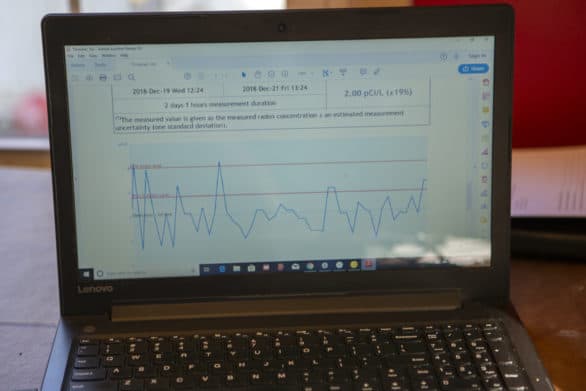
- Ask questions – Even with the videos and Ben explaining our results thoroughly, my husband and I still had questions. We talked to Ben about further steps we could take to drop our radon levels even more. While our levels are considered safe, we felt like we could do better than that. Ben offered a good suggestion about installing a special filter. The filter not only reduces the radon levels in a home, it removes things like allergens that are circulating in our home. We’re definitely going to look into it now. We have Ben’s card should we think of more questions later (lucky him).
Save on testing your home
For more than four decades, Thrasher has been waterproofing basements, fixing home foundations, and repairing concrete in Nebraska. The company is local, though now they’ve expanded into Iowa, Kansas and Missouri.
They’re offering a 25% off discount on a Continuous Radon Monitor this month, making January a great time to test your home’s radon levels. The test usually costs $100, but with this discount, you pay $75.
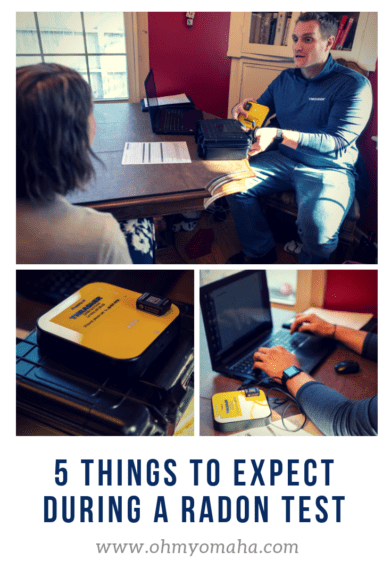
Win a free mitigation system
Thrasher is holding a giveaway for a free mitigation system. To enter the giveaway, visit this gothrasher.com and scroll to the bottom of the page to find the giveaway form. No purchase necessary. Must be 18 or older to enter. Radon system must be installed in Thrasher radon service area.
I recommend getting your home tested first before entering to be sure you even need one.
Stay In The Know!
Subscribe to the FREE twice a month(ish) e-newsletter sharing what’s new in Omaha, giveaways, family travel ideas, and more! Subscribe here.

radon testing omaha
Monday 23rd of May 2022
This is really nice information and Thank you for this guide.
Brian
Wednesday 24th of June 2020
Great article - Thanks for taking the time to lay that out so well. Cheers, Brian
Radon Mitigation Lexington KY